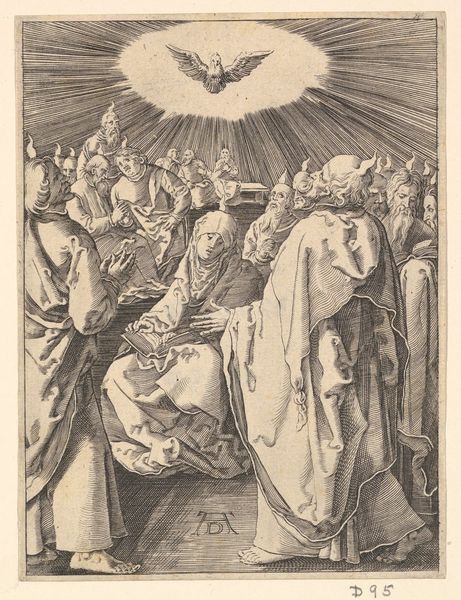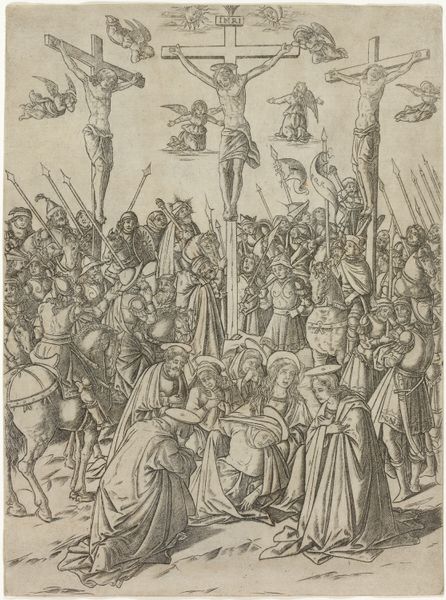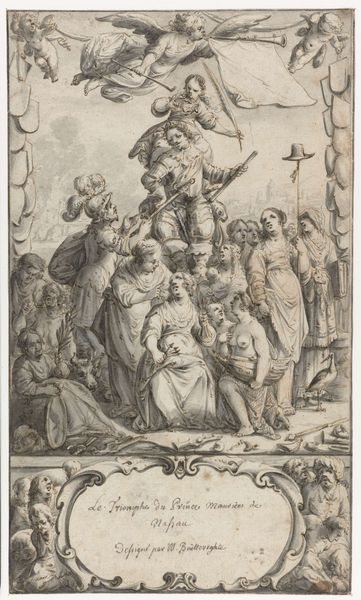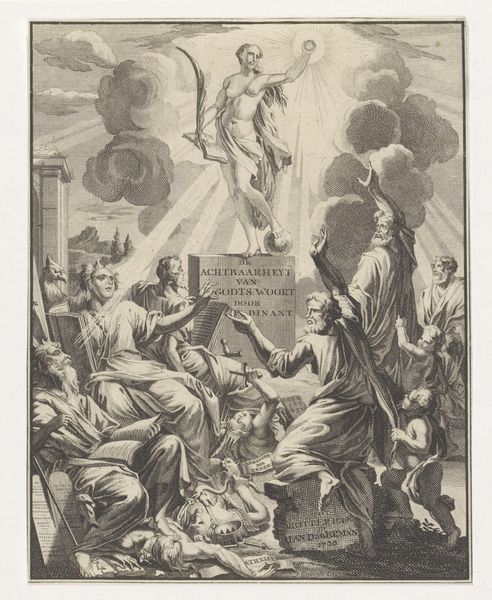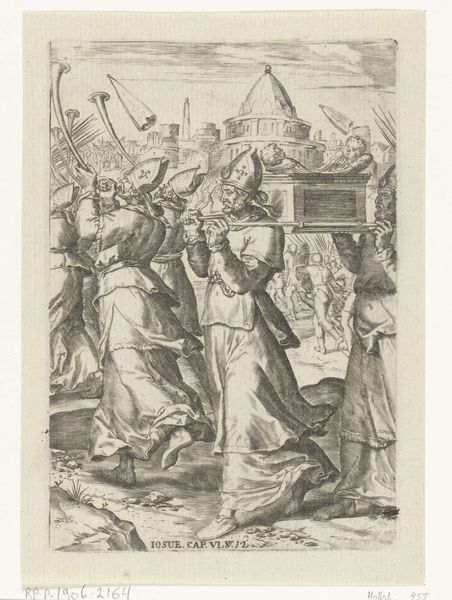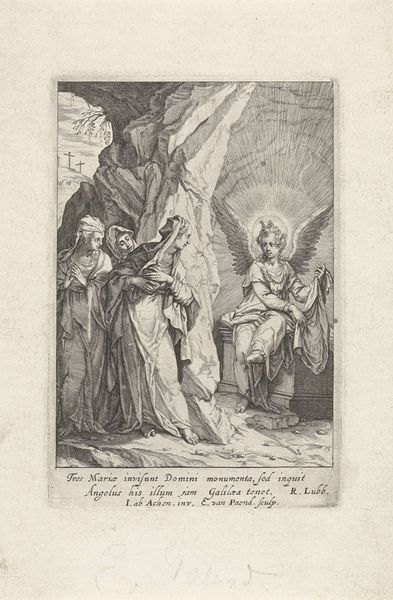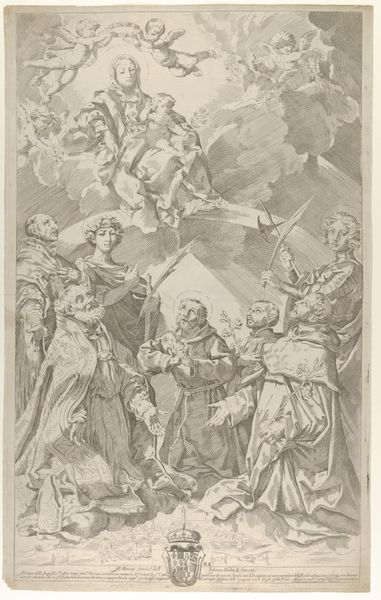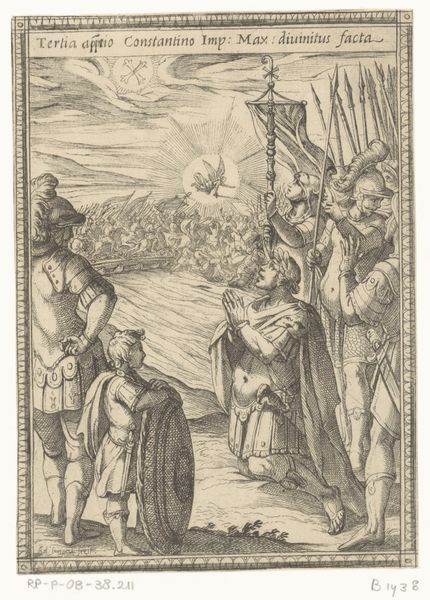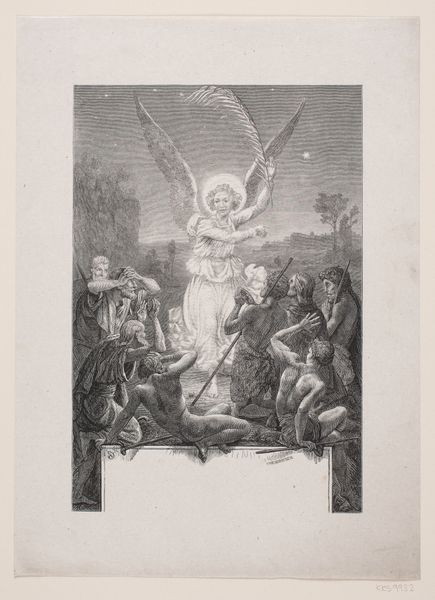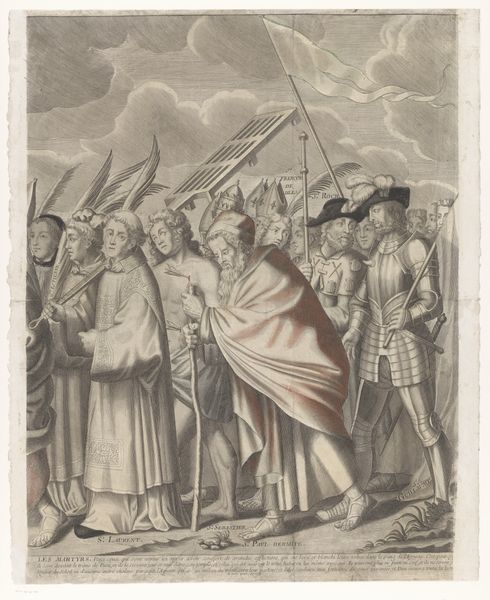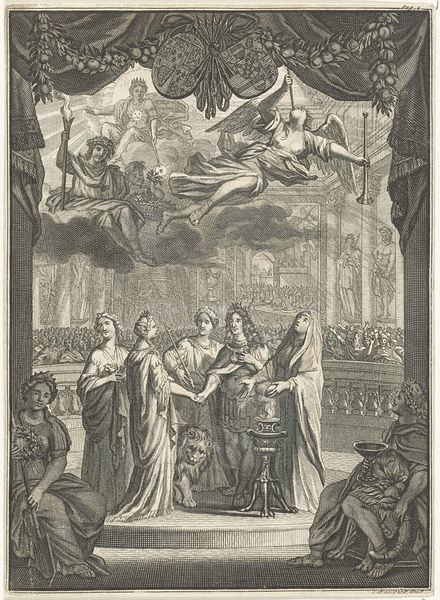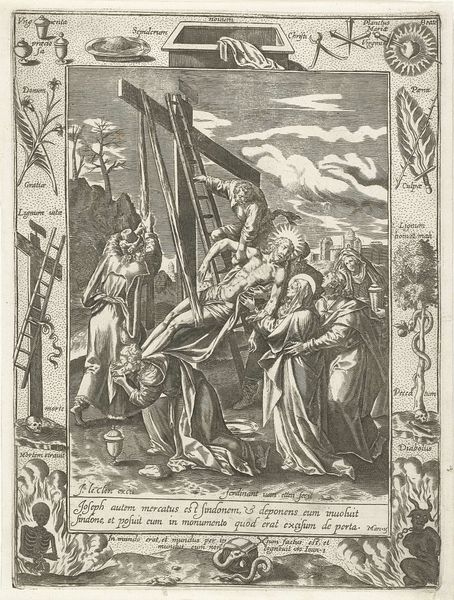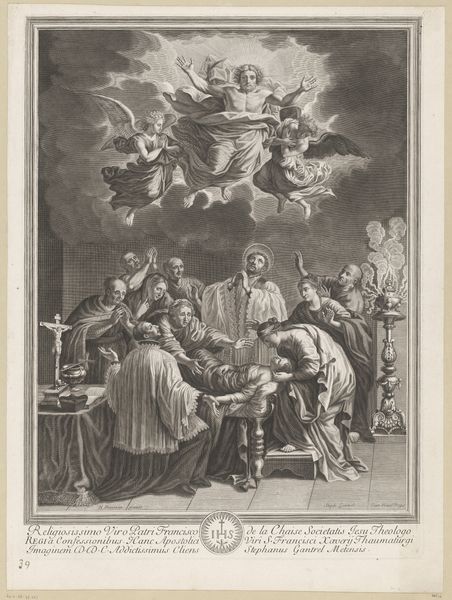
Triomftocht van Christus met figuren uit het Oude en Nieuwe Testament (tweede deel) 1687 - 1694
0:00
0:00
print, engraving
#
allegory
#
baroque
# print
#
figuration
#
history-painting
#
engraving
Dimensions: height 685 mm, width 544 mm
Copyright: Rijks Museum: Open Domain
Editor: This engraving, “Triumph of Christ with figures from the Old and New Testament (second part)” by Nicolas de Larmessin, dates from the late 17th century. It’s packed with figures and symbolic objects! What strikes me is the sheer labor involved in creating such a detailed print. What stands out to you? Curator: It’s true, the process is central here. Consider the socio-economic context: printmaking like this allowed for mass dissemination of imagery, influencing popular beliefs. Think about the engraver, Larmessin; his skill translates religious narrative into a reproducible commodity. Note the layers, the techniques used in the engravings. How might this mode of production have changed how religious messages were received? Editor: I see what you mean! So, the choice of printmaking wasn’t just about aesthetics, but about reaching a wider audience through, in essence, mass production. Was this a common practice for religious imagery at the time? Curator: Absolutely. Printmaking became increasingly vital to disseminate not only religious ideas but also political propaganda. Examine the paper itself; its quality and size. How does the material speak to its intended consumer? Was this aimed at the elite, or a more general public? The level of detail would take incredible expertise, so was there perhaps a team working in Larmessin's studio to fulfil specific production roles? Editor: It's amazing to think about the engraving as a physical object, connecting to broader historical and social forces. It adds a completely new dimension to how I see it. Curator: Precisely. It pushes us to see art not as solely individual genius, but as the product of materials, labor, and distribution networks within a specific time. It becomes part of economic exchange! Editor: I had never considered the commercial side of religious art like this. I'll definitely look at prints with a different perspective now!
Comments
No comments
Be the first to comment and join the conversation on the ultimate creative platform.
